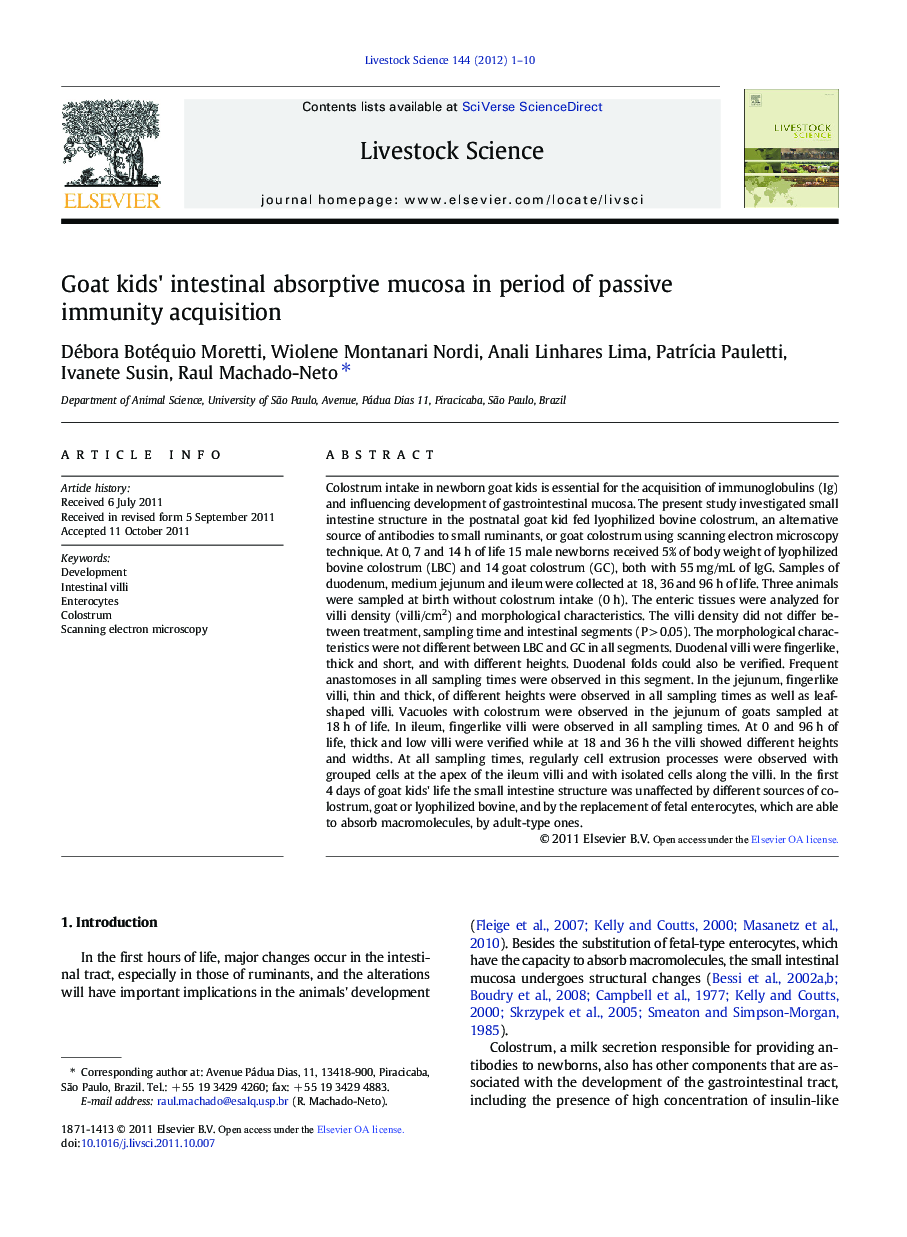| Article ID | Journal | Published Year | Pages | File Type |
|---|---|---|---|---|
| 5790920 | Livestock Science | 2012 | 10 Pages |
Colostrum intake in newborn goat kids is essential for the acquisition of immunoglobulins (Ig) and influencing development of gastrointestinal mucosa. The present study investigated small intestine structure in the postnatal goat kid fed lyophilized bovine colostrum, an alternative source of antibodies to small ruminants, or goat colostrum using scanning electron microscopy technique. At 0, 7 and 14Â h of life 15 male newborns received 5% of body weight of lyophilized bovine colostrum (LBC) and 14 goat colostrum (GC), both with 55Â mg/mL of IgG. Samples of duodenum, medium jejunum and ileum were collected at 18, 36 and 96Â h of life. Three animals were sampled at birth without colostrum intake (0Â h). The enteric tissues were analyzed for villi density (villi/cm2) and morphological characteristics. The villi density did not differ between treatment, sampling time and intestinal segments (PÂ >Â 0.05). The morphological characteristics were not different between LBC and GC in all segments. Duodenal villi were fingerlike, thick and short, and with different heights. Duodenal folds could also be verified. Frequent anastomoses in all sampling times were observed in this segment. In the jejunum, fingerlike villi, thin and thick, of different heights were observed in all sampling times as well as leaf-shaped villi. Vacuoles with colostrum were observed in the jejunum of goats sampled at 18Â h of life. In ileum, fingerlike villi were observed in all sampling times. At 0 and 96Â h of life, thick and low villi were verified while at 18 and 36Â h the villi showed different heights and widths. At all sampling times, regularly cell extrusion processes were observed with grouped cells at the apex of the ileum villi and with isolated cells along the villi. In the first 4Â days of goat kids' life the small intestine structure was unaffected by different sources of colostrum, goat or lyophilized bovine, and by the replacement of fetal enterocytes, which are able to absorb macromolecules, by adult-type ones.
